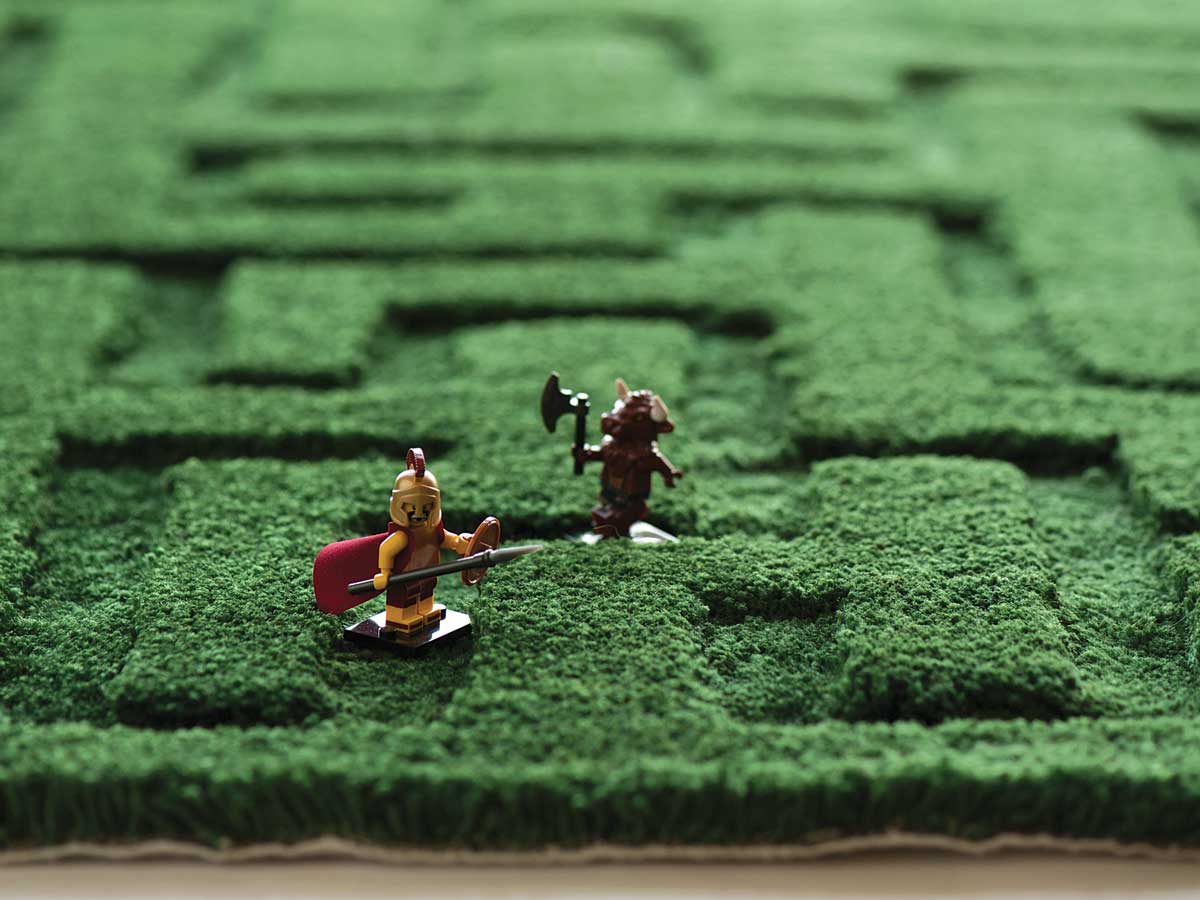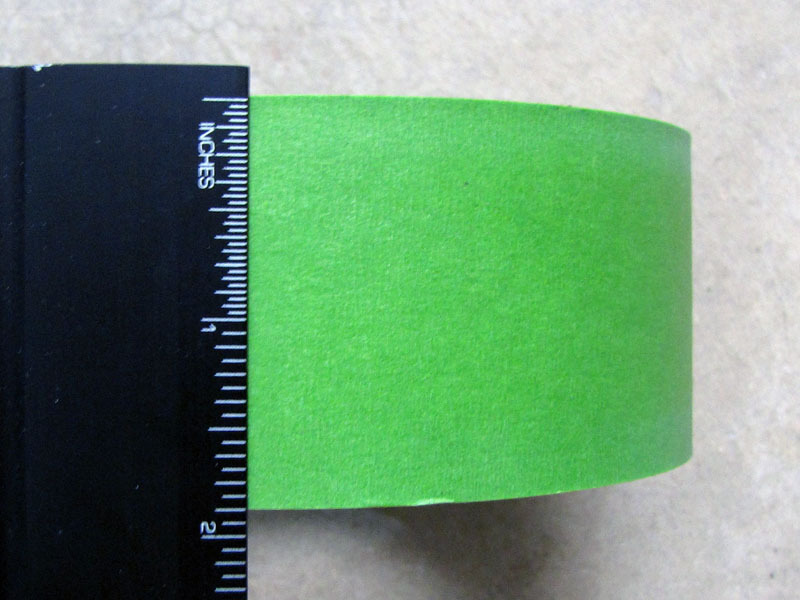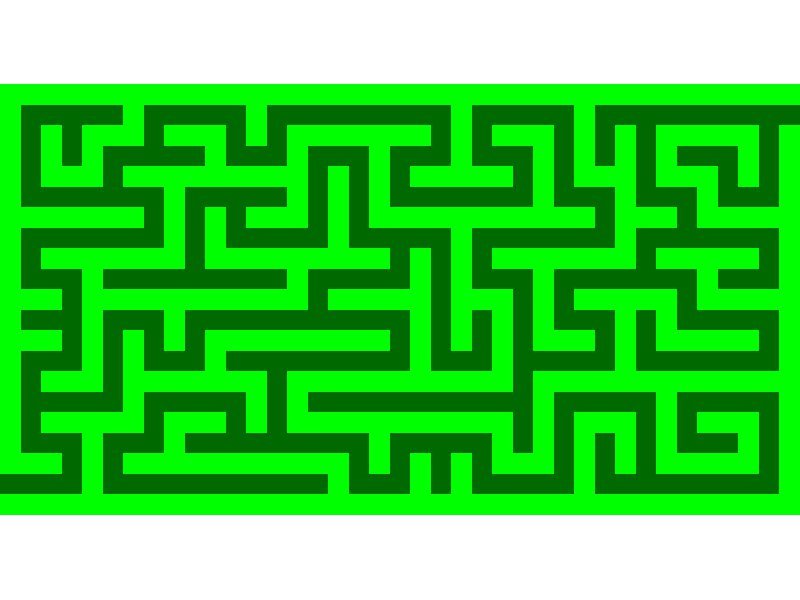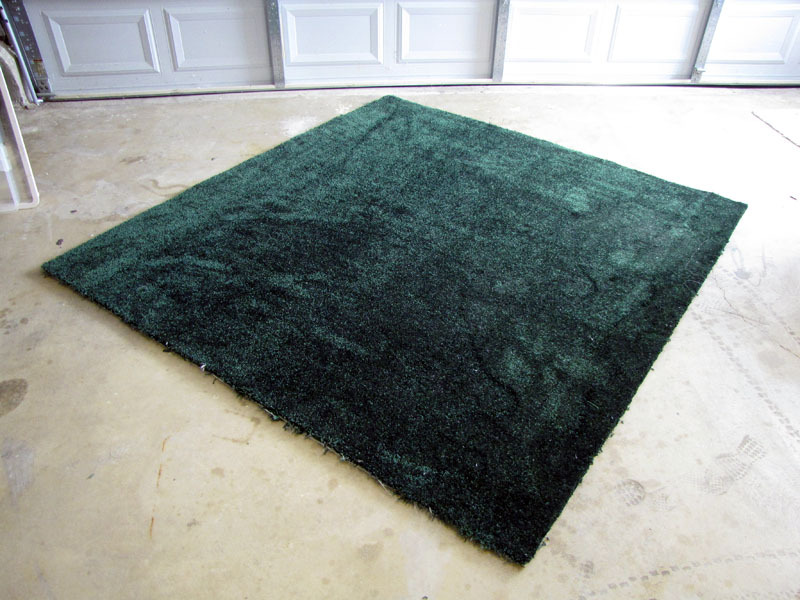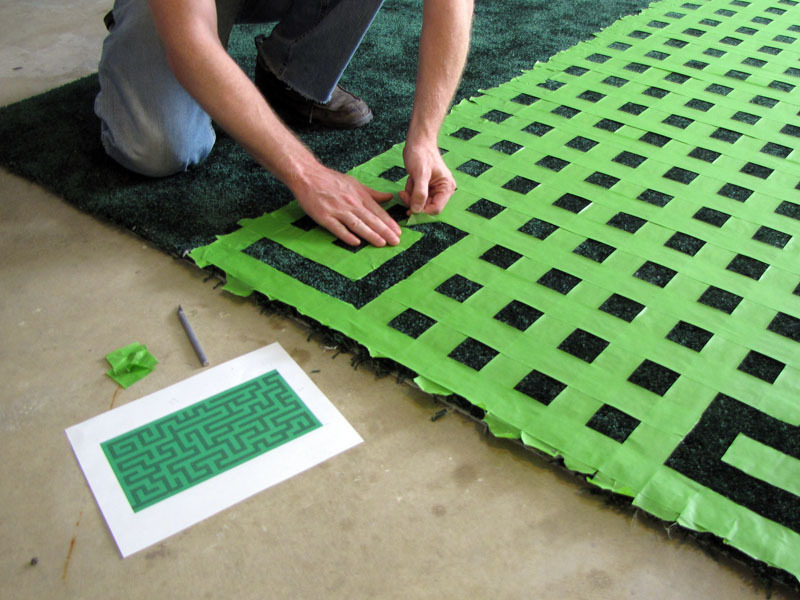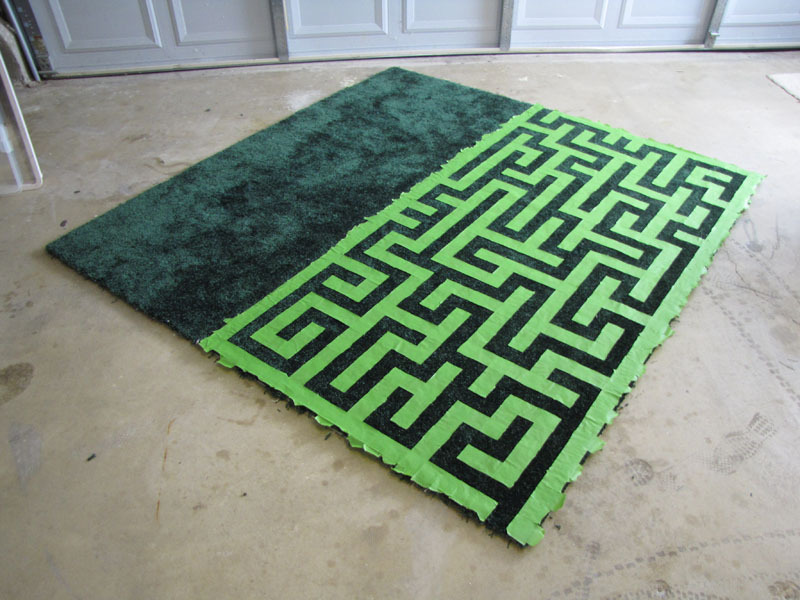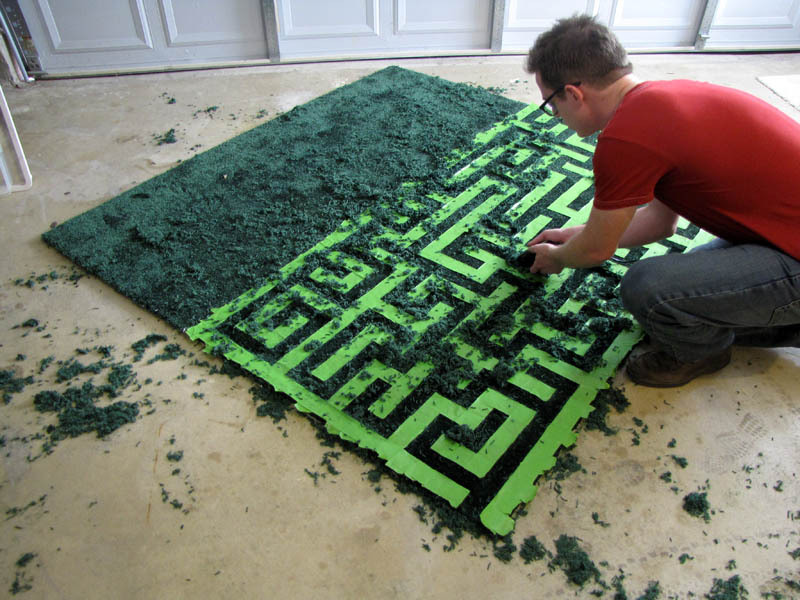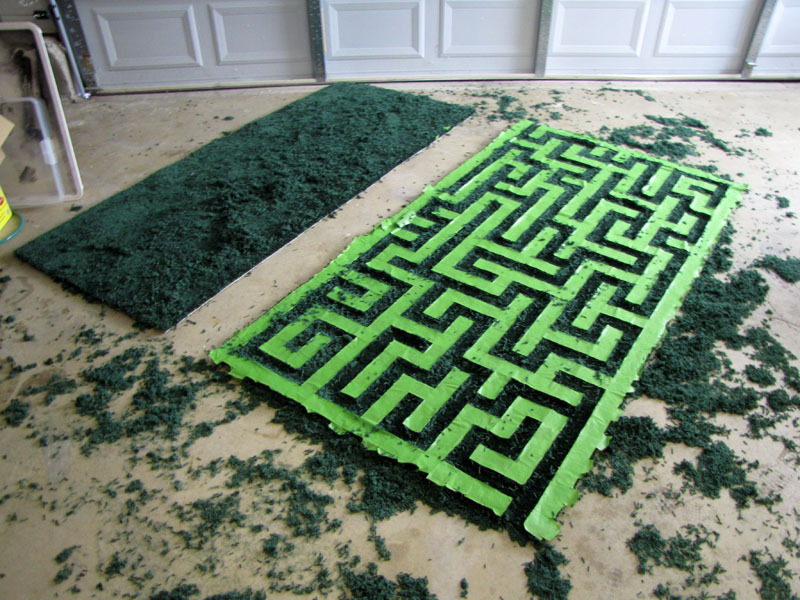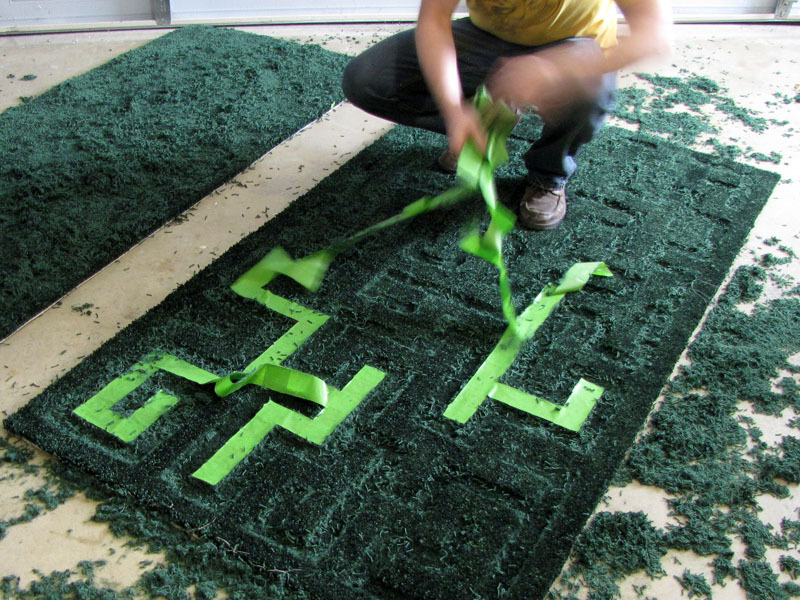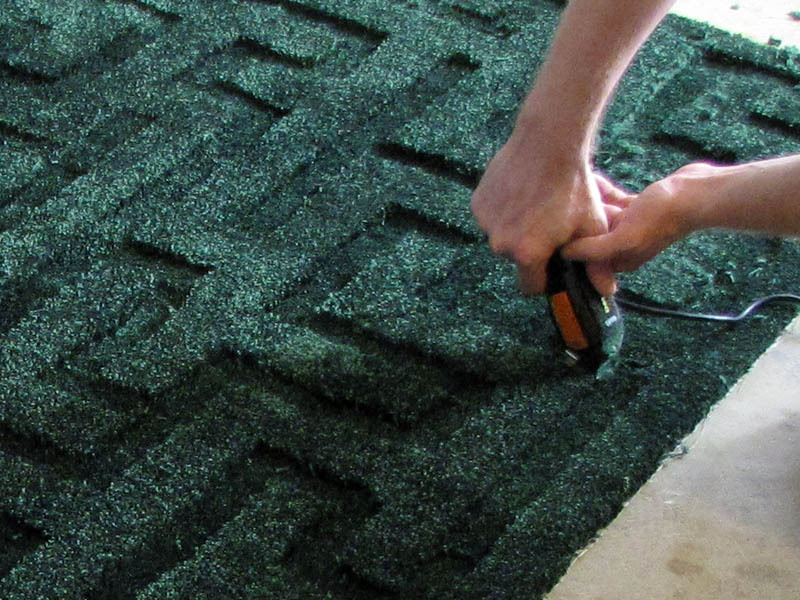I once saw a pricey designer “labyrinth” carpet in a catalog and wondered if I could re-create the effect cheaply by taking electric hair clippers to a piece of ordinary carpet. Long story short: it works. A maze pattern on green carpet is great for the “hedge maze” look, but your design could be anything!
Projects from Make: Magazine
Hedge Maze Area Rug
